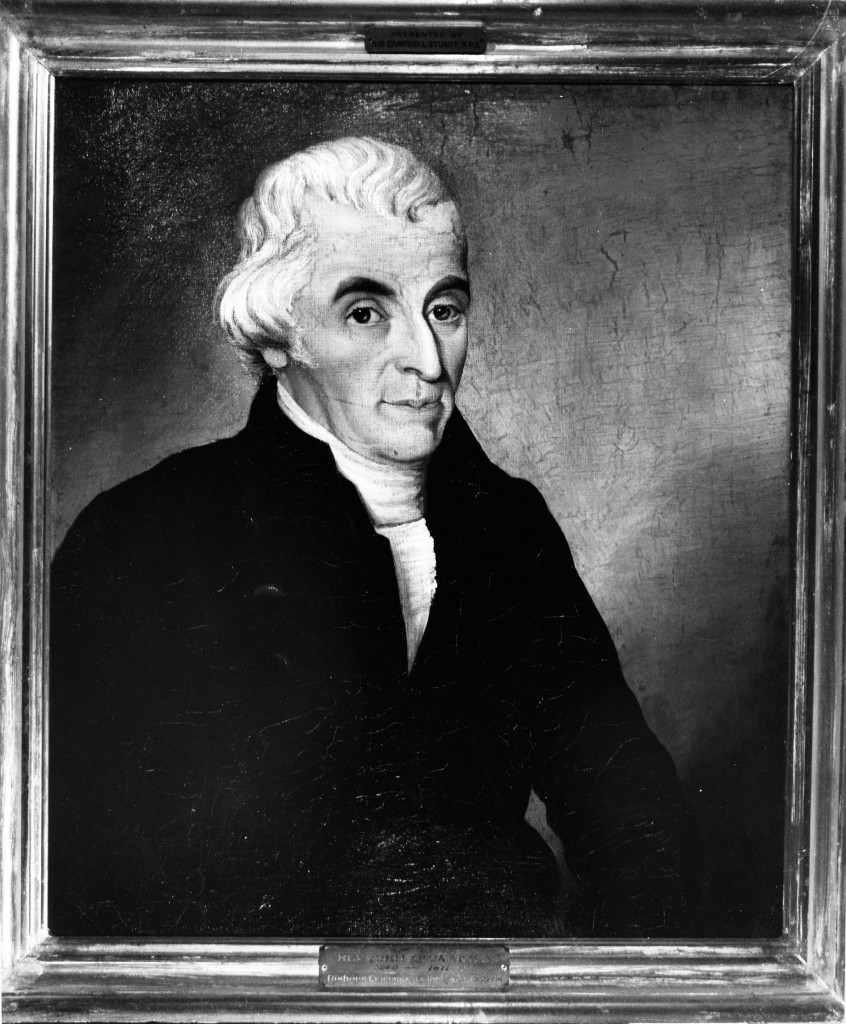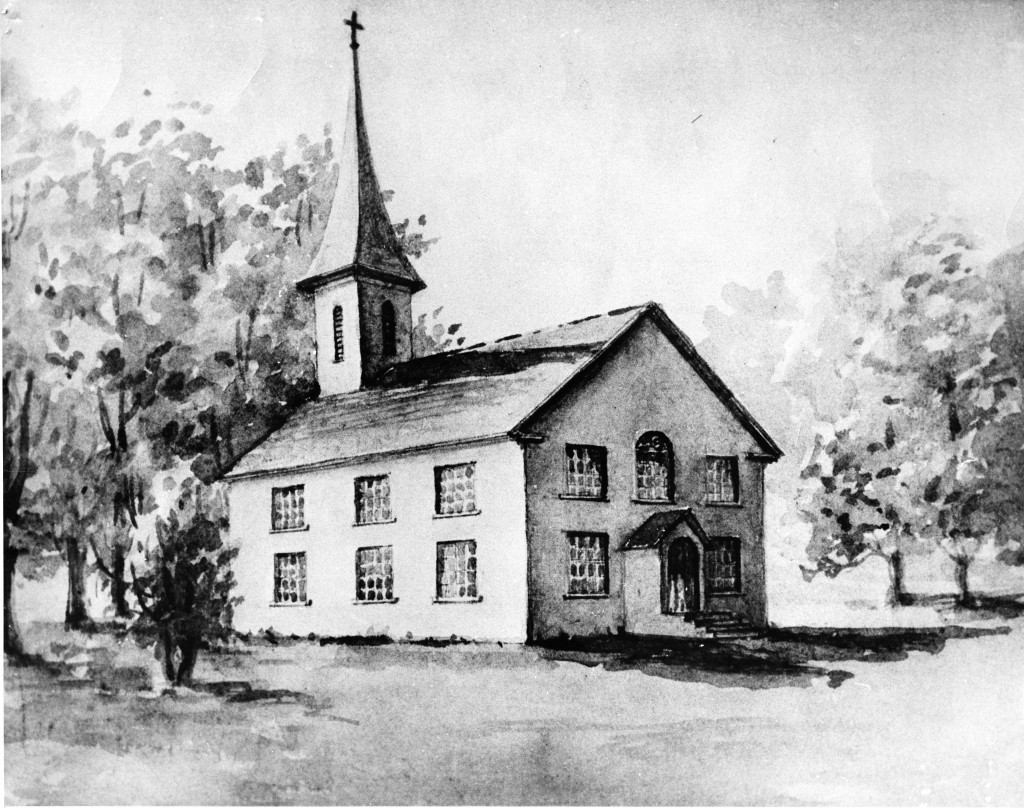Street Address : 270 King St. East
Period: 1750-1800
Reverend John Stuart’s contribution to the religious, educational and social development of Kingston is undeniable. He was known to be “a man of exemplary character, good understanding and education” and one who had “great influence with the Loyalists as well as the Indians”(1). He was said to be a handsome man of Irish descent, well over six feet tall and admired among his peers. He was good friends with both Molly and Joseph Brant and is buried near Molly on the grounds of St. Paul’s Church on Queen Street in Kingston (the exact location is not known).
Reverend Stuart was ordained in 1770 in London, England and soon after, upon returning to New York, held services for Indigenous and white people at Fort Hunter; he was also appointed missionary to the Indians in Canajoharie, where he first met Joseph Brant. Brant lived with Reverend Stuart for a short period of time in the Mohawk parsonage near Fort Hunter after being widowed in 1771, losing his first wife of three. Around this time, they worked together to translate the New Testament into Mohawk tongue (eventually printed in 1787).
Near the end of the 1770s, Reverend Stuart’s property in New York was ransacked, as was the case for many other Loyalists. His church was looted and his life became so troublesome that he requested permission to leave. Eventually, in 1781 Reverend Stuart, along with his family – his wife, their first three sons and their African slaves – were allowed to go to Quebec, where he held a job as a schoolmaster. It wasn’t until 1785 that he settled in Cataraqui as a second wave Loyalist. In Cataraqui Reverend Stuart opened the first school west of the Ottawa River; it was originally run out of his home, but later in a government building. St. George’s, an Anglican church, was the first church of any denomination in Kingston and was founded by Reverend Stuart in 1792. It’s original location, which is now marked by a plaque, was the former Whig Standard building, across from Market Square. It was a modest wooden structure at just 40 x 32 feet. Mrs. Simcoe, wife of Lieutenant-Governor John Graves Simcoe, was very much impressed with the service at this new church, as evident from an entry in her diary: “I went to church twice. The clergyman, Mr. Stuart, is from the United States. He preached good sermons with an air of serious earnestness in the cause which made them very impressive”. On another occasion, Mrs. Simcoe wrote about a particularly enlightening service that she had attended: “Mr. Stuart preached one of the most impressive and best sermons I have ever heard, the text ‘Now is the accepted time, now is the day of salvation’”(2).
Molly and Joseph Brant and the Haudenosaunee Loyalists were members of this church as well and embraced Reverend Stuart’s teachings. Molly was the only female benefactor of St George’s (3) and was good friends with Reverend Stuart. Though he was known to have little in terms of material possessions, Reverend Stuart had much to give. He was dedicated to his teachings, (through both his grammar school and his church) and was passionate about the influence that a sound education and spiritual footing had on the unity and cohesion of a community. His guidance and example shaped the people of Cataraqui and instilled in them a sense of solidarity, which proved to be invaluable in the war of 1812. Until his death in 1811, Reverend Stuart’s political beliefs and allies did not waver and he continued to be a strong and praised leader in Cataraqui. His son, George Okill Stuart took over for him at the church, while also teaching at the grammar school.



